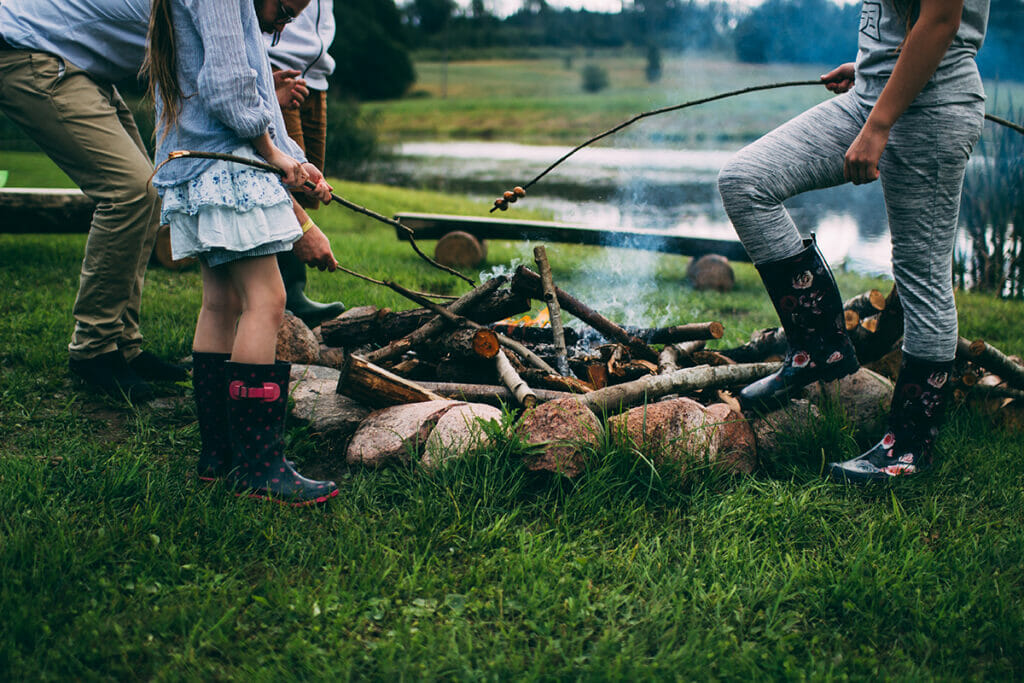
Fire safety is becoming increasingly vital as the years go on, so in order to have the best and most secure camping trip possible, you’ll need to implement some extra measures and practice proper preparedness. Here is how to ensure that your camping clan is secure when you’re headed out into the great outdoors…
Do your research ahead of time
You’ll need to put some time into researching conditions, risks and requirements for the area that you’re planning on visiting. Dedicating a few moments to reading up on the specificities of the site or location that you’ve got in mind will ensure that you are staying safe and informed from the get go. Whilst some areas might allow a controlled campfire, others may not, the majority will likely depend on the time of year. You should delve in and educate yourself on the specific fire regions that you’ll be heading into as each location has its own regulations, warnings and resources. Once you know which fire district you’re visiting, you can find relevant and specific advice for your exact destination before you hit the road.
Watch the weather
Your research should also take the form of keeping a close eye on the forecast for the duration of your trip. Hop online and study the Bureau of Meteorology’s website to stay up to date on any changes a few days before your adventure begins. Other resources include Fire Safety Ratings, location specific apps for bushfire information and support, local news and radio broadcasting. A camper trailer will help to protect you from extreme conditions should they reveal themselves during one of your adventures. The Traveller is a great roomy, mid-sized camper that will keep your group protected in moments of high heat or dangerously strong sun. Remember that any extreme changes in weather is an indicator that it’s time to head back home.
Pay attention to subtle risks
Fire safety for camping does not only apply to the obvious risks. Your car’s muffler heats as you drive and can create potential hazards when parked or driven through grassy areas. When driving long distances it is better to stay on the road or on pre-established tracks. Fire bans will always vary from state to state with potential Total Fire Bans occurring at peak risk periods. You should also inform yourself on whether there are any Prescribed Burns taking place near your planned trail, you’ll find this at the Parks and Wildlife service dedicated to your chosen location.
If in doubt, stay home
It is always better to be safe rather than sorry. Whilst you might be incredibly excited for that upcoming trip, if it comes with safety concerns or risks, it’s just better to stay home and head out there when you’ve got the all clear.
Pack for safety
Preparedness is key! Whether you’re heading out in fire risk season or not, whenever you are venturing into nature you have to bring a few key safety essentials with you. Pack yourself a survival kit with a radio, protective clothing, bandages, a torch and portable chargers. You should also keep a fire safety blanket on hand for any high risk situations that might arise.
Approach campfires with caution
Although campfires might be a staple for camping, they’re not always a great idea particularly when it comes to fire safety. If you are heading to a campground that allows fires and you’re visiting outside of a fire ban there are a few measures to take to ensure your safety. These include…
Closely following the guidelines and rules prescribed by your chosen camping location.
Staying aware and responsible with all heat sources including your muffler and gas stoves or portable barbecues.
Only starting a campfire for functional purposes.
Using fire pits if provided.
Always staying present for the duration of your fire. Unattended campfires pose a range of risks and should be avoided at all costs.
Stay aware at all times
Awareness and common sense are key to maintaining the safety of your group and your surrounding environment. Stay aware, prepare accordingly and pack your essentials for a successful trip all year round.

